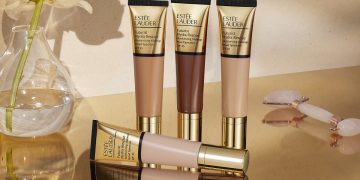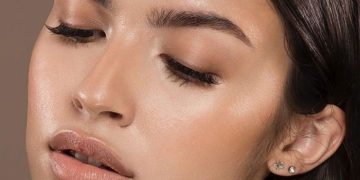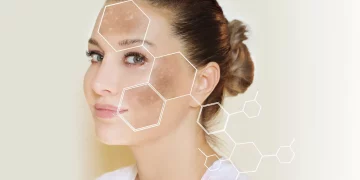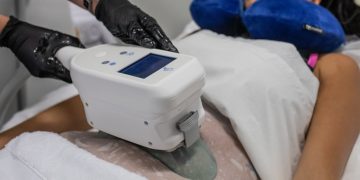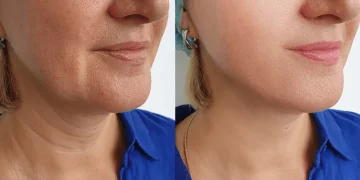As people age, the appearance of fine lines, wrinkles, and sagging skin can affect their self-esteem and overall confidence. In the past, the only solution for reversing these signs of aging was through traditional facelifts, a surgical procedure involving incisions, removal of excess skin, and tightening of the underlying tissue. However, non-surgical facelifts have gained popularity in recent years, providing individuals with a less invasive alternative to rejuvenate their facial appearance. But what exactly are non-surgical facelifts, and are they a safer, effective alternative to traditional surgery? This guide explores the principles of non-surgical facelifts, including how they work, the ideal candidates, benefits, risks, and long-term effects.
1. Introduction: Overview of Non-Surgical Facelifts
A non-surgical facelift refers to a variety of cosmetic procedures designed to lift, tighten, and rejuvenate the skin without the need for invasive surgery. These procedures are designed to target the common signs of aging, such as drooping skin, wrinkles, fine lines, and volume loss, without the extended recovery time and risks associated with traditional facelifts.
Non-surgical facelifts typically involve minimally invasive treatments that can be performed in a medical spa or dermatologist’s office, often within an hour or two. While the results are not as dramatic or permanent as a surgical facelift, they can provide a noticeable improvement in the overall appearance of the face with minimal downtime.
2. How It Works: Explanation of Techniques Like Botox, Dermal Fillers, and Thread Lifting
Several techniques are commonly used in non-surgical facelifts, each with its own benefits and purposes. Below are the most popular options:
Botox (Botulinum Toxin)
Botox is one of the most well-known non-surgical treatments for reducing wrinkles, particularly around the forehead, between the eyebrows, and around the eyes (crow’s feet). Botox works by temporarily paralyzing the muscles that cause dynamic wrinkles, allowing the skin to smooth out.
The procedure involves small injections of Botox into specific muscles, which typically takes about 10 to 20 minutes. The results are usually visible within a few days and last for 3 to 4 months. Botox is effective for treating expression lines but does not address sagging skin or volume loss.
Dermal Fillers
Dermal fillers, such as hyaluronic acid, calcium hydroxylapatite, and poly-L-lactic acid, are injectable substances used to restore lost volume, smooth out wrinkles, and enhance facial contours. Fillers can be used in various areas, including the cheeks, under-eye hollows, jawline, and nasolabial folds.
Unlike Botox, which works on muscles, dermal fillers add volume to areas where fat and collagen have diminished over time, restoring a youthful plumpness. The procedure is quick, typically lasting 15 to 30 minutes, with minimal discomfort. Results can last anywhere from 6 months to 2 years, depending on the type of filler used.
Thread Lifting
Thread lifting is a procedure that involves the insertion of temporary sutures into the skin to lift and tighten sagging areas of the face. The threads, often made of polydioxanone (PDO), stimulate the production of collagen as the skin heals, offering long-term skin tightening effects.
Thread lifting can be used on various parts of the face, such as the jawline, neck, and cheeks. The procedure takes about 30 to 60 minutes and offers immediate results, though the full effects may take a few months to develop as collagen production increases. Results typically last for 1 to 3 years, and while there is some swelling or bruising after the procedure, it’s generally minimal compared to a traditional facelift.

3. Candidates: Ideal Candidates and Conditions for Non-Surgical Facelifts
Non-surgical facelifts are ideal for individuals who are looking for a more subtle, temporary improvement in their appearance without the commitment or recovery time associated with surgery. However, not everyone is a good candidate for these treatments. The ideal candidates include:
1. Individuals with Early Signs of Aging
People in their 30s to early 50s who are experiencing fine lines, wrinkles, or slight skin sagging are often ideal candidates for non-surgical facelifts. These treatments are best for addressing early to moderate signs of aging before significant skin laxity occurs.
2. Those Seeking Subtle Results
Non-surgical facelifts are best for individuals who desire subtle improvements in their facial appearance, such as smoothing lines or restoring volume, but do not want dramatic changes. These procedures allow for a more natural-looking rejuvenation.
3. People Who Want Minimal Downtime
Since non-surgical facelifts require little to no recovery time, they are perfect for people with busy schedules who cannot afford weeks of downtime. Patients can return to their daily activities almost immediately after treatment.
4. Those Who Are Not Ready for Surgery
Individuals who are interested in facial rejuvenation but are not ready to commit to the permanent changes or risks associated with surgery often opt for non-surgical alternatives.
However, individuals with severe skin laxity, deep wrinkles, or other advanced signs of aging may not achieve the desired results with non-surgical facelifts and may require a traditional surgical facelift for more dramatic, long-lasting outcomes.
4. Benefits & Risks: Advantages and Possible Risks Compared to Traditional Facelifts
Benefits of Non-Surgical Facelifts
- Minimal Downtime: Non-surgical facelifts require little to no recovery time. Most patients can resume their normal activities within hours or a few days after treatment.
- Reduced Risk: Since non-surgical facelifts don’t involve incisions, the risk of complications like infection, scarring, and anesthesia side effects is significantly reduced compared to traditional facelifts.
- Less Expensive: Non-surgical procedures are generally more affordable than traditional facelifts, making them accessible to a wider range of individuals.
- Customizable Results: Treatments like Botox, dermal fillers, and thread lifting can be tailored to the individual, allowing for a personalized approach to facial rejuvenation.
Risks of Non-Surgical Facelifts
- Temporary Results: One of the biggest downsides of non-surgical facelifts is that the results are not permanent. Botox typically lasts 3 to 4 months, dermal fillers last 6 months to 2 years, and thread lifts last 1 to 3 years. As a result, these treatments require regular maintenance to maintain results.
- Side Effects: While the risks of complications are low, side effects such as bruising, swelling, or redness can occur, especially with injectable treatments. Rarely, infections or allergic reactions may occur, although they are uncommon.
- Subtle Results: Non-surgical facelifts are ideal for individuals seeking subtle enhancements. However, those with more advanced signs of aging may not achieve the dramatic results they desire.
- Uneven Results: As with any cosmetic treatment, the results of non-surgical facelifts may vary. In some cases, there may be uneven or less-than-ideal results that require additional treatments or adjustments.
5. Long-Term Effects: What Results You Can Expect Over Time
The long-term effects of non-surgical facelifts depend on the specific procedure performed. While the results are not permanent, they can provide significant improvements that last for months or even years. Here’s a general idea of what you can expect:
- Botox: The results of Botox typically last for 3 to 4 months. Over time, as the botulinum toxin wears off, wrinkles will gradually reappear. Regular treatments can help maintain the smooth, youthful appearance.
- Dermal Fillers: The effects of dermal fillers can last anywhere from 6 months to 2 years, depending on the type of filler used and the area treated. Collagen-stimulating fillers, such as Sculptra, offer longer-lasting results by stimulating the skin’s natural collagen production.
- Thread Lifting: Thread lifts provide immediate results, and the skin continues to tighten and improve over the following months as collagen is stimulated. Results can last from 1 to 3 years, after which additional treatments may be needed.
6. Conclusion: When to Consider Non-Surgical Facelifts
Non-surgical facelifts are a great option for individuals who are looking for subtle, temporary improvements to their facial appearance without undergoing the risks and recovery time associated with surgery. If you are in the early stages of aging, seeking minimal downtime, or simply want a less invasive solution, non-surgical facelifts can provide noticeable results with little risk.
However, it’s important to keep in mind that these treatments are not a permanent solution. Regular touch-ups and maintenance will be required to maintain the results. Additionally, non-surgical facelifts may not be suitable for individuals with advanced signs of aging or those seeking dramatic changes.
Ultimately, whether a non-surgical facelift is right for you depends on your goals, budget, and willingness to commit to ongoing treatments. Consulting with a skilled aesthetician or dermatologist can help you decide if a non-surgical facelift is the best option for rejuvenating your appearance and enhancing your confidence.









